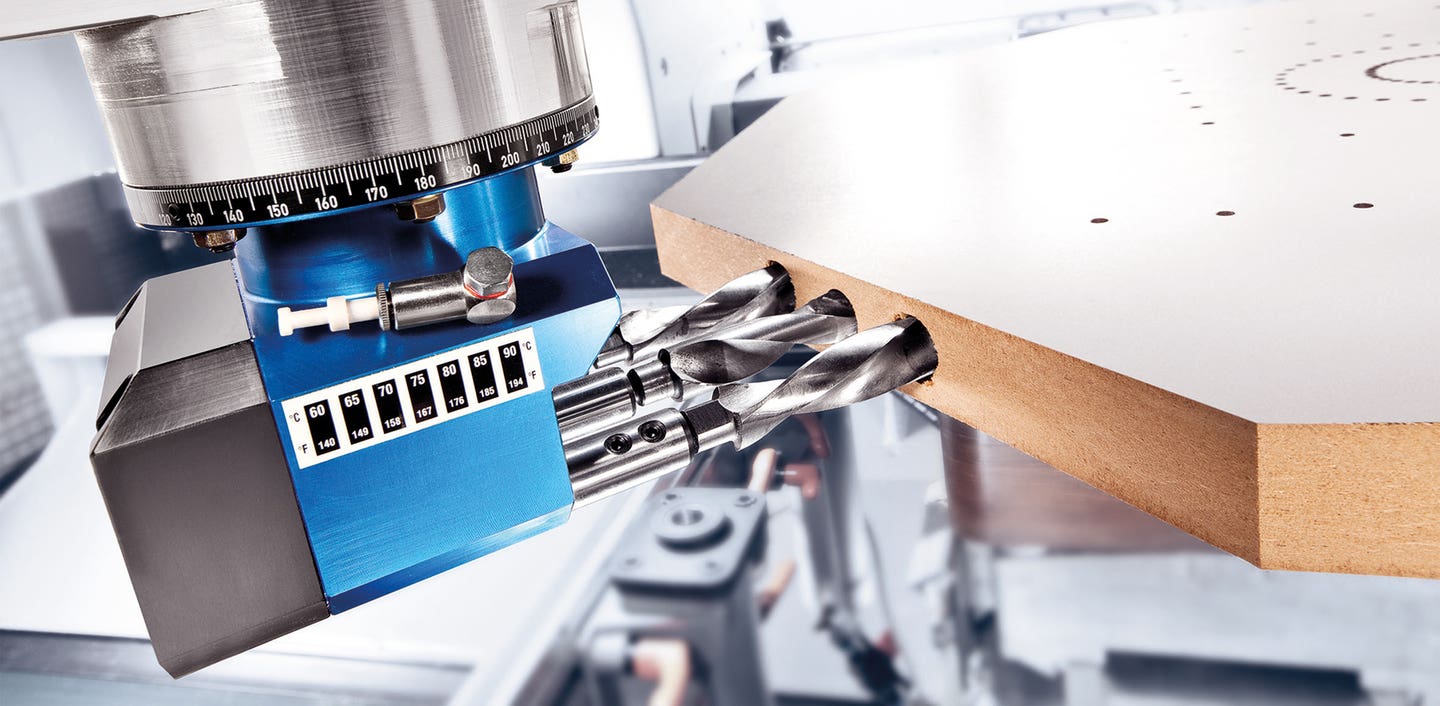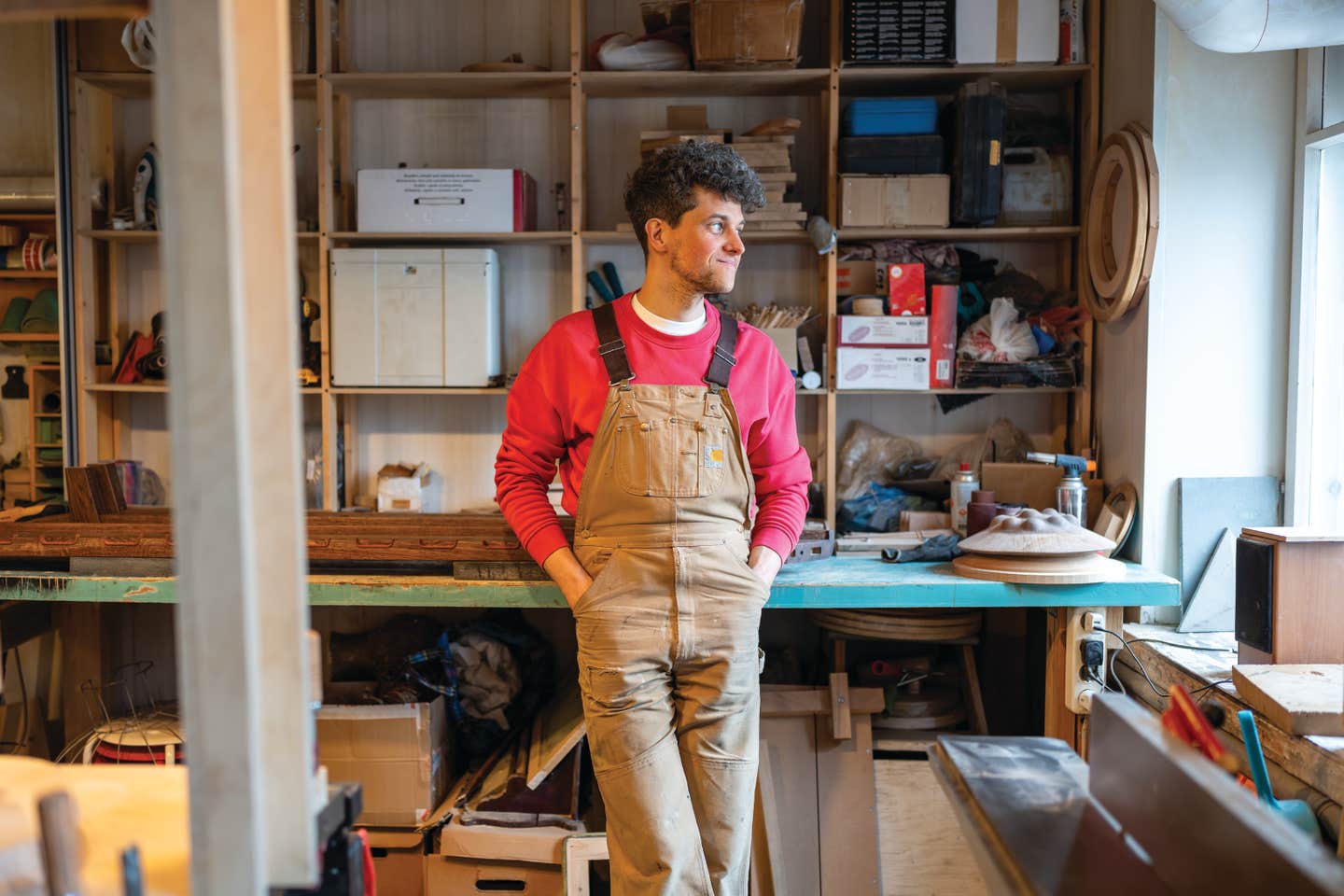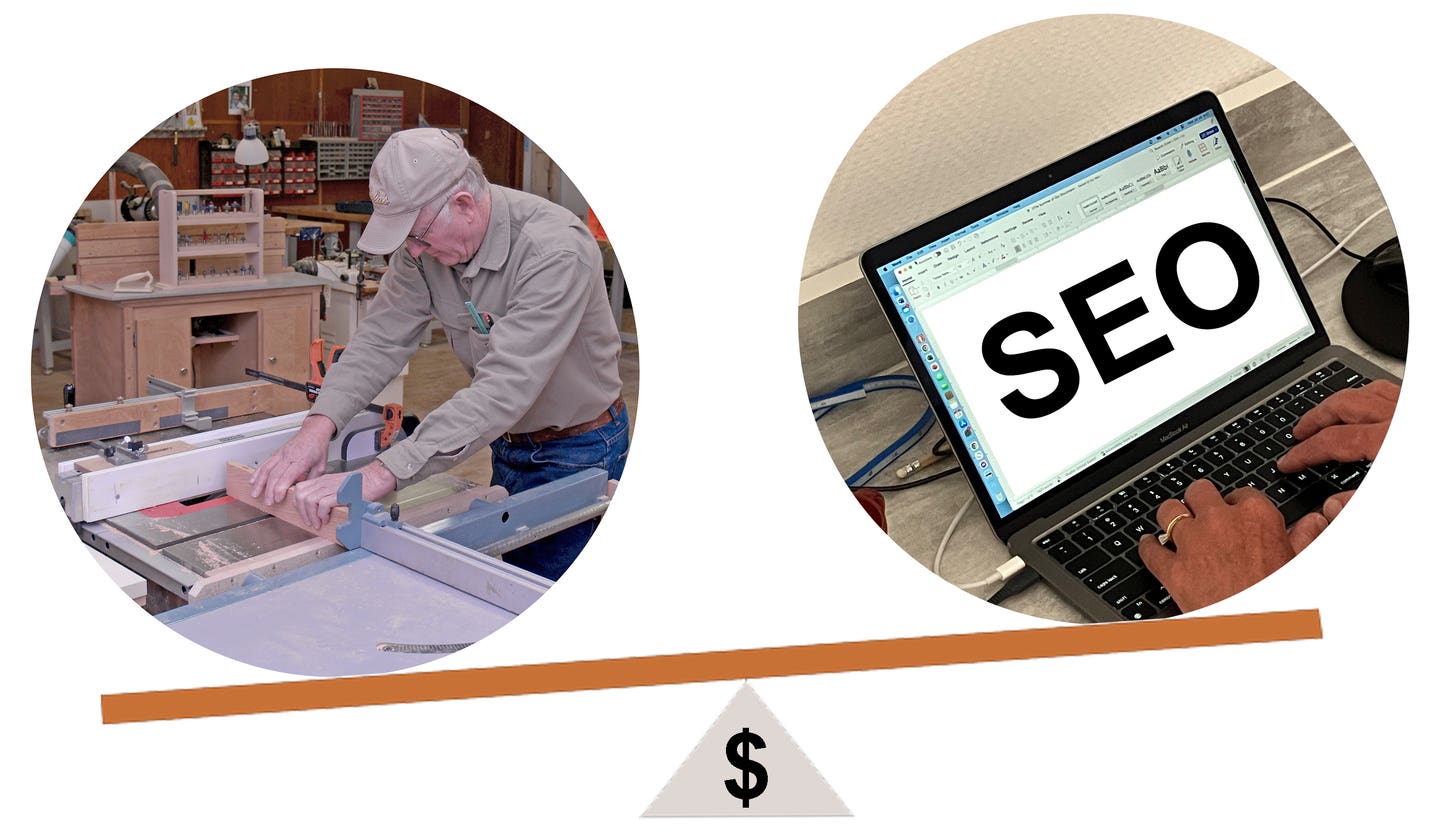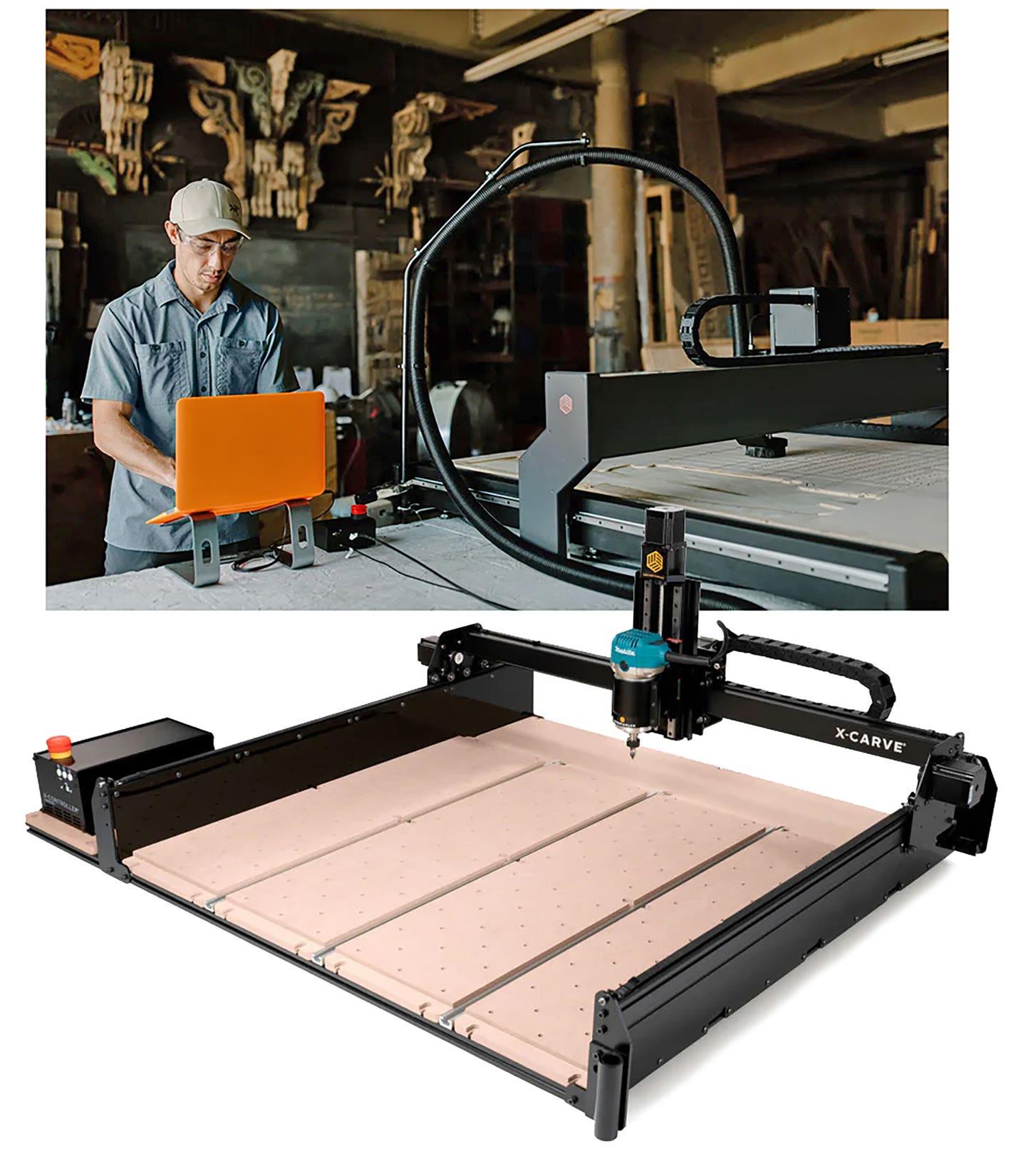Countertop choices
The list includes granite, laminate, solid surface, concrete, engineered products, and some favorites from the past making a comeback
What goes around…
In the early 19th century, as kitchens became more formalized, marble and maple slabs began to replace pine, slate, cast iron and stone as the countertops of choice. Many early kitchens also had an end-grain chopping block or at least a breadboard on hand, to help save the main surface. Soapstone was popular too, and granite finally appeared in the pantries and kitchens of upscale homes during Victoria’s reign. By the end of the century, cooks were also choosing steel, nickel, pewter and edge-glued maple strips (a version of butcherblock) to top their cabinets and surround their sinks. Ceramic tile was a strong favorite for a while, especially as a backsplash material, and stainless steel began appearing between the wars.
All of those receded during the post-War boom in colorful plastic laminate, which eventually led to the solid surface revolution in the early 1980s. That lasted a few decades until natural solutions and manmade imitations slowly crept back into the limelight. In addition to marble, concrete and glass, recent countertop history has leaned heavily toward the same materials used a century or more ago – stainless steel, maple butcherblock, granite and engineered stone that often looks like marble and slate, but isn’t as soft, porous or scratchable.
With all that history and the vast volume of experience it has delivered, woodshops now have a vast array of materials to choose from when it comes to counters and other components. Designers and architects often spec the tops, or customers hire their own countertop subs, so woodworkers don’t always get to choose or influence choices. But when they do, they need to know their options.
What’s new?
One of the major advantages that laminate and solid surface materials have over natural and synthetic stone is that they can be machined with woodworking tools.
PaperStone fits this bill. The manufacturer is based in Hoquiam, Wash., and is online at paperstoneproducts.com. The material can be fabricated and installed using traditional tools with high quality carbide-tipped blades. As a relatively new and affordable alternative to traditional solid surface materials, it comes as composite panels that are made from post-consumer recycled paper, melamine, proprietary non-petroleum phenolic resins and natural pigments. The product is durable and easy to install, has a Class A fire rating, and remains structurally rigid in both horizontal and vertical applications. Most PaperStone products are certified recycled by the Rainforest Alliance to the Forest Stewardship Council (FSC) standards and are also certified food safe by NSF International. It is available in thicknesses from 1/8” to 1-1/4” and sheets up to 60” x 144”.
One of the newest things from Panolam Ind. in Shelton, Conn. is something old. The company’s Nevamar plastic laminate division is celebrating its 80th year by introducing the Yesteryears Collection. This is a mix of 20 new and retro woodgrain, abstract and solid countertop designs that have been inspired by some of our favorite patterns over the past four decades. Looking at the collection online at panolam.com, older woodworkers will definitely feel a tug on their memory strings. These are the colors and patterns of ’50s diners and Grandma’s appliances, kitchen table and countertops. They are an evocative and inspiring dance down Memory Lane, and there are woodshops out there that will both delight in them and find ways to make them thoroughly modern.
Among other products, Stevens Ind. (stevenswood.com) in Teutopolis, Ill. makes unique textured and patterned laminates for medical, educational and commercial interior cabinetry and millwork. The newest design collection is called Ashland, which is described as harmonious greys and tranquil white, industrial concretes, genteel textiles and cozy woodgrains in four distinctive textures (Trio, Alder, Artika and Warm) and nine fresh color offerings. The collection also has an inherent green nature as its recycled core requires that no trees need be sacrificed for design. Stevens Wood collections are UL GreenGuard Gold Certified and the Ashland collection is available with an FSC-certified core option.
Omnova Solutions (omnova.com) in Beachwood, Ohio makes emulsion polymers, specialty chemicals and engineered surfaces for a variety of commercial, industrial and residential uses. Among its offerings are a variety of decorative surface materials including paper laminates in a large assortment of patterns and colors and hundreds of woodgrains; 2D laminates that are engineered to be scratch, abrasion and stain resistant, and 3D laminates, also known as rigid thermofoils (RTF). Omnova also makes acrylic specialty laminates (films) that are an attractive, functional and affordable surfacing solutions for a variety of indoor and outdoor applications where UV and/or moisture resistance is required. They come in stone and woodgrains, plus abstract or geometric designs, and they can be flat laminated or thermo-formed to a variety of substrates. These films are available in both standard and impact-modified formulations, and they are reverse printed in a variety of widths up to 92”.
For woodshops that need to create something very custom, very dramatic and quite unique, Omnova’s Viewnique digital wall murals are customized large format, printed vinyl wallcoverings that can be used to create single spaces or reinforce branding across franchise locations. These murals are available in a variety of textures, styles and constructions, including a recycled content offering that may contribute to LEED certification. And creating a Viewnique mural can be a fast, straightforward process that can go from initial concept to finished execution in just a few short weeks.
Stone and rock
Shops have a wide range of choices when it comes to both sedimentary and igneous natural rock and synthesized (engineered) stone. These include marble, granite, quartz, concrete, sintered stone and soapstone.
Marble is sedimentary, so it usually has calcium and other mineral deposits that appear as streaks and patterns that give it a unique appearance. However, it needs constant sealing and even with that will often stain over time because of its porosity. It’s softer than most other stone choices, too, and is thus susceptible to hardened steel knife edges and other abrasion. However, it does look rich and can be extraordinarily appealing.
Granite was fired in the bowels of the earth and formed as magma cooled. It is tough, beautiful and enduring because it is made up of quartz, feldspar, mica and other hard minerals. It’s also one of the most expensive options. It will withstand a great deal of use and abuse, comes in myriad colors and patterns and is widely available. In many upscale real estate markets, granite kitchen counters are the expected norm and nothing else will be acceptable.
Both marble and granite tile can be an extremely cost-effective alternative to one-piece or joined slabs, especially in mid-priced neighborhoods. Big box stores such as Lowes usually carry 12” square solid granite and marble tiles that run from $2 to $10/sq. ft. The standard way to use them in countertops is to lay down a 3/4” plywood deck topped by a cement board and then set the tile. Incorporating a ceramic backsplash and front drop delivers approximately 25” depth. With materials and labor, the finished counter usually runs less than $25/sq. ft., can often be completed by in-house personnel and can work better with a tight schedule than waiting for a slab to be manufactured and installed. Marble slabs are in the $100 to $200/sq. ft. range, so the savings are often large enough to overcome a client’s objection to grout lines.
Quartz (crystallized silicon) is another very popular stone-based option. Engineered quartz is made by crushing the rock and then reconstituting it with resins. It can have some minor issues with heat that one doesn’t get with granite, but other than that the materials are quite similar in terms of the properties.
Cambria (cambriausa.com), located in Le Sueur, Minn., is a manufacturer of natural quartz surfaces. The company’s namesake product often looks and feels like granite or marble, but the manufacturer says that it is harder than both. That means Cambria is less likely to scratch, chip, or stain. And while marble especially requires regular sealing, all Cambria requires is to be washed down with a little warm water and mild soap. It’s nonporous and nonabsorbent, so it won’t draw in moisture from raw or leftover food, which can harbor harmful bacteria.
Caesarstone Ltd. is headquartered in Charlotte, N.C. and operates a new manufacturing facility in Richmond Hill, Ga. This company also manufactures premium quartz surfaces, which are used in both residential and commercial projects as countertops, vanities, wall cladding, floors and other interior surfaces. Caeserstone is blended at a ratio of approximately 90 percent natural quartz aggregates with pigments and polymer resins.
One might think that concrete countertops would be an inexpensive alternative, but they can be surprisingly costly when done by a competent artisan. Because they are often poured on-site, they are extremely customizable and can work well in irregularly shaped spaces or in renovations where square and plumb need to be compensated. Concrete is extremely durable, must be sealed properly, is difficult to decorate so it is usually offered only in a wide range of monotones, and is very trendy. It also needs good structure in the casework because of its inherent weight.
A less expensive alternative is sintered stone, which is a conglomeration of recycled rock, glass, ceramic and other materials. It is quite green, which can be appealing to homeowners with environmental concerns. It’s quite subjective in appearance, depending as it does on the component minerals. For example, DuraLosa is a brand of sintered stone countertop manufactured by Sage Surfaces (sagesurfaces.com) in The Woodlands, Texas. It is comprised of natural materials including clay, feldspar and other minerals and pigments. Currently, the catalog includes a baker’s dozen of color options running from the creamy ivory Avena through reds, browns and even veined patterns to the luxurious deep gray Pizarra, which has ebony accents.
Soapstone is another economical option. This is a quarried gray, blue, greenish natural stone that can have some marbling. It was popular a century ago and has always stayed on the fringes of the countertop market. Much of its content is talc, which is a clay mostly comprised of magnesium silicate. Talc got a bad rap lately because a personal product made with it allegedly had traces of asbestos. That apparently isn’t an issue with soapstone. It’s not as hard as granite but is quite dense. So, it’s not very porous, and thus doesn’t require sealing. According to the Vermont Soapstone Co. in Perkinsville, Vt., it “has been a staple in labs for ages because it’s extremely durable and impervious to virtually all chemicals.” It is also impervious to heat, and seams are almost invisible when done by a pro. Vermont and other manufacturers can mill grooves for drain boards in soapstone counters that lie adjacent to sinks.
Alternative thinking
Among the other possibilities for covering or creating counters are thermofoil and the new generation of modified lumber. Neither is a solution for high traffic or use, but they can be used in ancillary locations such as prep areas. Thermofoil is not heat resistant, but it is easy to clean and doesn’t have the warping, chipping, or climate-related issues that can arise with paint or other finishes. And modified lumber such as those offered by Lignia (lignia.com) have value as both a sustainable resource and also as a somewhat more resilient surface than some of the less dense hardwoods. It’s especially suitable for outdoor kitchens because of its durability and stability.
Lignia begins as fast-growing softwoods from FSC-managed plantations. The manufacturing process then transforms it into a low-movement timber with all the properties of hardwoods. According to the company, that leads to a reduction in the number of slow-growing hardwood trees being felled, with a corresponding increase in sustainability for the planet. In addition to the basic product, there are also fire-and water-resistant versions.
Not all new materials are used in horizontal orientation. Many of the latest innovations complement counters and are being used not only in casework but in backsplashes and wall panels, too.
This year, AGT is adding several new colors and patterns to its decorative panels line. Woodshops can currently choose between matte and high gloss polymer panels that are available in numerous neutral colors. These are ideal for interior cabinetry, wall paneling, furniture and other vertical surfaces. The low reflective properties of AGT’s matte panels can help create environments that are both elegant and tranqui. Both solutions offer ease of use, a strong resistance to chipping, and excellent stain resistance. They are distributed by Hardwoods Distribution Inc. through its Hardwoods Specialty Products, Paxton and Rugby locations.
While it’s not the best choice for food prep areas or around sinks and in bathrooms, wood is still a great option for low traffic counters. Greenlam Ind. (greenlam.com) in Doral, Fla. offers premium wood veneer laminates in a range of species that are made from FSC-certified timber. The company also offers compact laminates for use in all weathers that have light-fast finishes designed to withstand years of outside use. They come in a huge range of solid colors, wood looks and mineral effects. Plus, some have anti-bacterial protection, and some were specially developed to shield surfaces from chemical attack.
Lenderink Technologies (lenderink.com) in Belmont, Mich. is probably best known in woodshops for veneers in thicknesses from micro thin (translucent) to 1/4″thick. But Lenderink also offers real natural stone veneer in thin sheets. These come in two different types of sheets – one has a proprietary No. 160 Water Resistant Backer that offers flexibility, and the other is a thicker option that offers translucency for back lighting. Both can make a shop’s creative juices flow. Lenderink will even build stone veneered panels (flat, curved and complex shaped) for a client.
This article originally appeared in the April 2020 issue.







